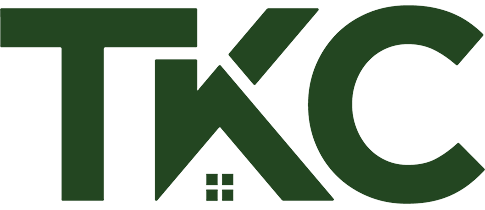Any business leader who has ever attempted to grow a business knows one thing:
It’s difficult.
Growing a business is a bit like building a building. At first, you are looking at a piece of nothing but land. When complete, the building has utilities, a foundation, inhabitants, a design, and even a personality.
Growing a business is similar. At first, you have nothing but an idea. But soon you have a registered business name, a logo, a website, employees, income & expenses, and a slew of other components.
One of the reasons building a business is difficult is because oftentimes, there is no blueprint. No roadmap. If you were building a home, for example, the first one would be very difficult. But once you have the roadmap, the building process becomes a lot smoother and more manageable.
Enter Rockefeller Habits.
Rockefeller Habits, implemented by John D. Rockefeller and distilled by Verne Harnish, is a blueprint that any business can follow to grow and scale a business with purpose, alignment, and accountability.
Here are the habits:
- The executive team is healthy and aligned.
- Everyone is aligned with the #1 thing that needs to be accomplished this quarter to move the company forward.
- Communication rhythm is established, and information moves through organization accurately and quickly.
- Every facet of the organization has a person assigned with accountability for ensuring goals are met.
- Ongoing employee input is collected to identify obstacles and opportunities.
- Client feedback is gathered consistently and moves through the organization quickly and efficiently.
- Core Values and Purpose are “alive” in the organization.
- Employees can articulate the following key components of the company’s strategy accurately: (1) Big Hairy Audacious Goal (BHAG) (2) Core Customer (3) 3 Brand Promises (4) Elevator Pitch
- All employees can answer quantitatively whether they had a good day or week.
- The company’s plans and performance are visible to everyone.
In Verne’s book, “Mastering the Rockefeller Habits”, he explains the major themes that drive this list of 10 habits:
- Priorities
- Data
- Rhythm
- The “X” Factor
Priorities
Every organization needs roughly 5 annual priorities and 5 quarterly priorities, and 1 of those priorities needs to be communicated to the company as the “Top 1” priority. Additionally, every member of the organization needs to have a handful of priorities he/she is responsible for completing each quarter. Some of these priorities change frequently (Ex. Quarterly Priorities), while other priorities hardly ever change (Ex. Core Values). You’ll see that several of the Rockefeller Habits surround this pillar of Priorities:
Rockefeller Habit #2 – Everyone is aligned with the #1 thing that needs to be accomplished this quarter to move the company forward.
Rockefeller Habits #7 – Core Values and Purpose are “alive” in the organization.
Rockefeller Habit #9 – All employees can answer quantitatively whether they had a good day or week.
Rockefeller Habit #10 – The company’s plans and performance are visible to everyone
Data
Every organization needs data on a daily and weekly basis to be able to keep a pulse on the organization and the market to make informed decisions. Several of the Rockefeller Habits get at the heart of the importance of having good data:
Rockefeller Habit #3 – Communication rhythm is established and information moves through organization accurately and quickly.
Rockefeller Habit #5 – Ongoing employee input is collected to identify obstacles and opportunities.
Rockefeller Habit #6 – Client feedback is gathered consistently and moves through the organization quickly and efficiently.
Rockefeller Habit #9 – All employees can answer quantitatively whether they had a good day or week.
Rhythm
The importance of rhythm within an organization is to ensure alignment, accountability, and communication regarding priorities and data collection. Consider the below habits:
Rockefeller Habit #1 – The executive team is healthy and aligned.
Rockefeller Habit #3 – Communication rhythm is established and information moves through organization accurately and quickly.
Rockefeller Habit #4 – Every facet of the organization has a person assigned with accountability for ensuring goals are met.
Rockefeller Habit #8 – Employees can articulate the following key components of the company’s strategy accurately: (1) Big Hairy Audacious Goal (BHAG) (2) Core Customer (3) 3 Brand Promises (4) Elevator Pitch
The “X” Factor
Every successful business ultimately creates a competitive advantage in their industry by capitalizing on a need, bottleneck, or pain point in that industry that adds value to the market. For example, Rockefeller’s competitive advantage was lower transportation costs that helped scale his oil business. For FedEx, it was the guarantee that its packages were delivered overnight with no exceptions.
The Rockefeller Habits system calls for a “measurable brand promise” that is simple and compelling. Thoroughly examine your business’s BHAG, geography, product lines, distribution channels, customer needs, and industry shortcomings for clues on what your company’s measurable brand promise could be.
The Kirkland Company
The Kirkland Company has been practicing Rockefeller Habits since 2015 and has hosted over 35 quarterly and annual planning sessions through Petra Coach, master practitioners of the Rockefeller Habits.
PRIMARY SOURCE:
“Mastering the Rockefeller Habits”, Verne Harnish






